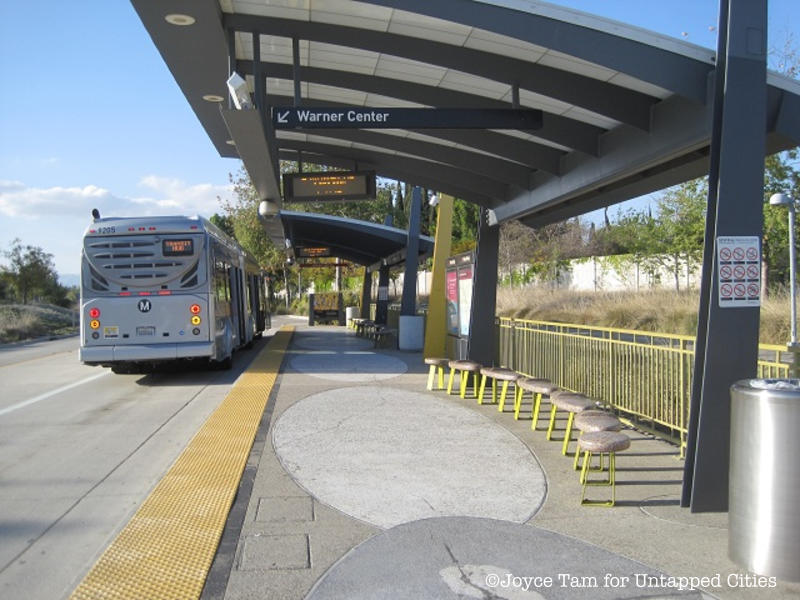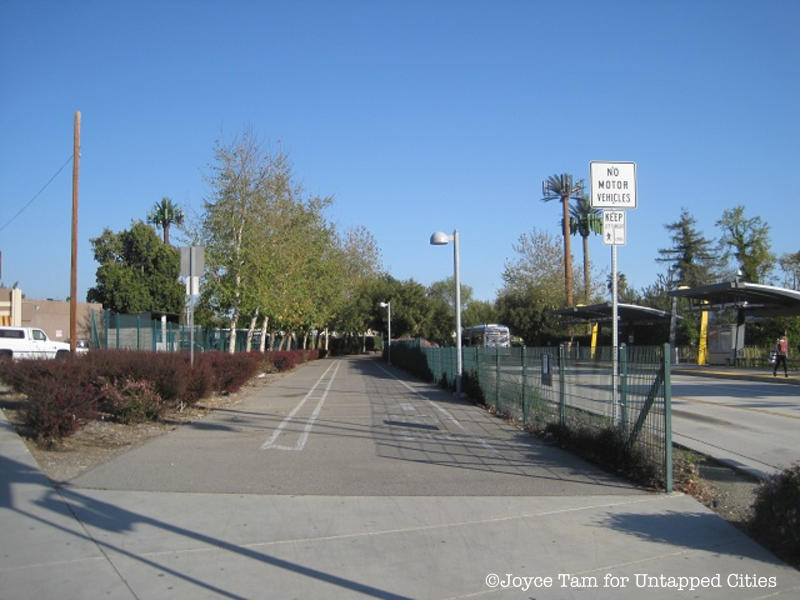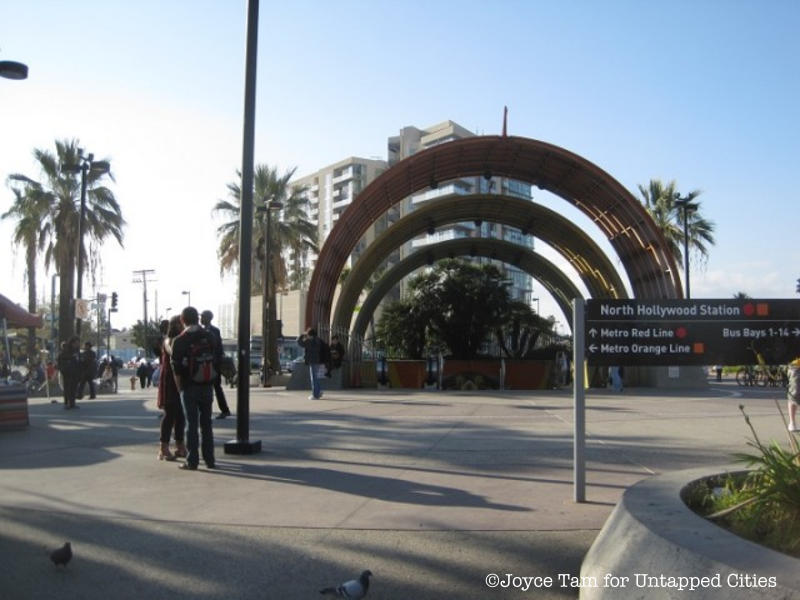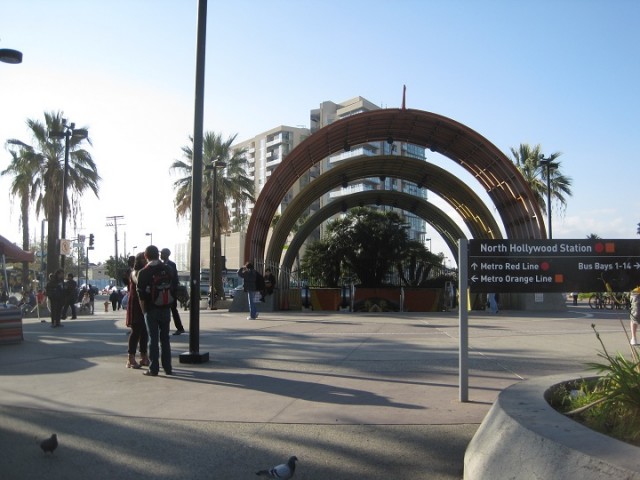
The Los Angeles County Metro Authority (or LA Metro) debuted a new 14-mile bus rapid transit (BRT) system in the San Fernando Valley in October 2005, using a former rail right-of-way. The LA Metro Orange Line was the first BRT system employed in the United States (the first in the world being that of Bogota, Colombia). Linking the western part of the San Fernando Valley with the North Hollywood Red Line metro station, the Orange Line is run on exclusive bus paths, so as to mimic the efficiency of rail systems. A 4-mile-extension in June 2012 increased the line’s reach and popularity.
Bus paths have the advantage over rail systems when it comes to maintaining route flexibility: it is much easier and less expensive to create new routes or change current routes. Bus rapid transit systems also use pre-board payment methods, and multi-entry doors to improve efficiency. The Orange Line is an excellent addition to the LA Metro system, not only expanding its network but embracing new and different methods of transport.

For nearly the entire length of the bus route, a bike and pedestrian path runs alongside the bus path – completely separated from all over traffic and therefore safe and comfortable to use. There are bike racks and lockers at every station, and the buses are equipped with front racks to accommodate up to three bikes, giving riders of the Orange Line multiple modes of transportation. Says Lynne Goldsmith, Transportation Planning Manager of the Metro Bike Program: “We know that bikes with transit is a key component in solving the transportation problem.”
For most riders, getting as fast as possible where they need to go is key, especially in a city so spread out and so decentralized as Los Angeles. The BRT system is of course bound to speed limits, but those go up to 55 MPH in some places. An automated signaling system prioritizes the buses, giving them a “Green Wave” and keeping them on schedule.
BRT systems are few in the United States: Chicago, for example, is debuting a pilot project this fall, and New York City, said to have the slowest buses in America, has three rapid bus lines (although feedback on their system has been mixed). In Los Angeles, more commitment in the same direction is needed: conflicts over investment priorities and policies, a long debate whether the city’s rails are booming at the expense of bus service, a lack of corridors for fast bus paths, and last but not least the old stigma of “taking the bus” (which in the general perception of the public remains an old, smelly, crowded and slow vehicle) are keeping the success story of the Orange Line a quiet one.

Read a detailed report and critique on the Orange Line’s features here.
Get in touch with the author @supergirldoes.






